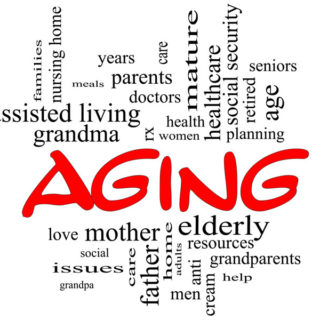At our Fourth of July party, a friend jokingly asked me what was worse than talking with your kids about the birds and the bees. Laughingly, he said it was talking with your parents about long-term care.

My friend and his wife are clients. He knows that the focus of my business is long-term care expense planning. In fact, not only is he a client he also refers his clients to me.
As we gather with friends and family to celebrate holidays and renew relationships it’s an excellent opportunity in a relaxed environment to observe cognitive skills and physical functionality. It can also be the appropriate time to discuss the importance of having a plan for long-term care.
My friend is pretty insightful. He may be right that talking with teenagers about sex is easier than discussing long-term care with aging parents.
Some of us are reluctant to have this discussion with our parents because we don’t know where to start or how to cogently support our concerns. But consider that a survey conducted by Genworth Financial, a major long-term care insurance company in our country, reported that two-thirds of people surveyed were waiting for someone else to start the conversation about long-term care.
In this post we provide helpful information to start and support conversations about long-term care with friends and family. You’ll learn:
- What to observe. It is a short list of noticeable changes or behaviors.
- How to deal with denial. How do you address the “it’ll never happen to me” comment?
- How to develop a plan. Where to start?
- Facts and stats that can support your conversation.
Changes in behavior – what to observe

The elderly have always needed assistance as they age. Changes in behavior can signal a need for help with physical and/or cognitive tasks. Look for these signs:
- Changes in home or yard maintenance. Have cleanliness and tidiness declined?
- Signs of memory loss. Missed appointments? Forgetting conversations?
- Change in appetite. Non-dieting weight loss? Non-diet related weight gain.
- Decline in driving capability. Driving too fast or too slow? In the bike lane?
- Medications not taken as prescribed. Wrong medication? Wrong dosage?
- Decline in grooming. Clothes clean? Bathing frequency? Lapse in oral hygiene?
- Increased need for assistance. Bathing? Dressing? Walking? Balance? Climbing stairs?
- Change in sleep patterns. Insomnia? Abnormal signs of fatigue?
It’ll never happen to me – dealing with denial
You may be right. You may be one of the lucky 30% that never needs help as you age. But what if you’re wrong? What if you are in the 70% group that will need care? How would your care needs affect those you love and who love you?
I think that reasonable people:
- Understand they could live a long life
- Understand it’s possible they could become frail and need care as they age
- Are willing to consider taking action if they understand that needing care could have serious consequences to their family and retirement portfolio
How to develop a plan – where to start
Having a plan for long-term care provides peace of mind and serves two purposes:
- The first is to allow you to remain in the community without risking the emotional and physical wellbeing of those who will provide your care.
- The second is to preserve your retirement plan so that it can execute for the purposes intended which generally include:
- Supporting your financial obligations
- Minimizing taxes
- Insuring the financial viability of your surviving spouse/partner

Developing a long-term care plan starts with three questions:
- If you needed long-term care, where would you want to receive care? Most of us want to remain at home. It is where we feel most secure and independent.
- If home, is the house multi-story? If so, could it be made more accessible – first floor bedroom, ramps, walk-in bathtub, electric stair chair, etc.
- Where would you want to live if widowed? Would you feel isolated at home?
- If living in your own home were no longer possible, where would you want to live? Care options might include living with a child or family member, group or residential home, assisted living community, continuing care retirement community, nursing home or other options.
- If you needed long-term care, who would you want to provide care? Not burdening family members is a primary concern.
- If married could your spouse provide care? Or kids? Other family members? Friends? This is an opportunity to think through who could actually be a caregiver and delve deep into the pros and cons of each potential caregiver.
- How old is your spouse? Will your spouse be alive and healthy enough to provide care? Does your spouse want to be the hands-on caregiver? Does your spouse want to help you bath and dress or assist with toileting needs?
- Could your kids provide care? Do they live in the same area? Do they work? Do they have kids of their own to care for? Are they really available to provide care?
- Research tells us that the future financial security of children is negatively impacted by caregiving. We see income, saving, retirement contributions and Social Security benefits all reduced. And, think about how the dignity of family relationships would change as kids become hands-on caregivers involved with bathing, dressing, toileting, etc.
- Care providers might include a spouse, partner, significant other, child, sibling or other family member, a friend, volunteers, paid caregivers or other options.
- If you needed long-term care, how would you pay for it? Not burdening family and remaining at home equates to privately paying for long-term care. Private pay means self-funding expense from income, savings and investments or funding with the benefits of private insurance.
- If you plan to self-fund, what assets would you liquidate to pay for care? How would that impact income? Taxes?
- Would you consider a reverse mortgage?
- Would family members help pay for care? Or insurance premiums?
- If Medicaid is your funding option, detail assets you would gift, transfer or spend to qualify.
- If private insurance, define the amount of expense you need to offset through insurance and a comfortably affordable premium budget.
- Do you have other funding opportunities such as government agencies or private charities?
If you will think through these three questions and write down your desires you are well on your way to having a plan for long-term care. The next step is to discuss your desires with family and others who need to understand your plan. Then take steps to be sure your funding strategy is in place.

Facts and stats – support for your conversation
- Long-term care and health care or Medicare are very different in design. Health care and Medicare are designed as curative or rehabilitative programs. They cover hospitalization, doctors’ fees, lab services and drugs. Long-term care is designed as custodial care. It provides assistance with activities of daily living which are defined as bathing, dressing, eating, toileting, continence and transferring. It also provides supervision due to cognitive impairment.
- The cost of long-term care is increasing annually. Like other services it’s a matter of supply and demand. Today 10,000 baby boomers turn 65 daily. The government projections are that by the time we turn age 65, 70% of us will experience a long-term care event. That’s 7000 more Americans at risk for needing long-term care every day! How will growing demand impact costs?
- We tend to think of long-term care as an end of life issue for the elderly. But 43% of those already receiving long-term care are working age adults between the ages of 18 and 64. The primary reason for their care is motor vehicle accidents followed by spinal injuries. The need for long-term care can develop at any time.
- We’re living longer. Medical technology is extending life expectancy. But the longer we live the more likely we are to need assistance. Today the average duration of long-term care insurance claims that last longer than one year is 4.3 years. This includes care in multiple care venues such as home, assisted living and/or skilled nursing.
- The national median cost of non-medical home care is currently $61,776 annually. A one-bedroom apartment in an assisted living community runs $54,000 and a private room in a nursing home is currently $108,405. Twenty years from now these costs are projected to increase by about 80%.
- Many Americans think that if they have Original Medicare they are covered for long-term care expense. This is not the case. Original Medicare will cover up to 100 days of custodial care given certain circumstances like being hospitalized for three nights and needing skilled care provided by medical professionals every single day. Claims history tells us that on average only about 22 days of custodial care are paid by Medicare. That is because most people do not need skilled care every day after about 20 days. The Centers for Medicare and Medicaid recently approved some health related custodial care services that may be included by insurers offering Medicare Advantage plans.
- For most Americans there are just three funding options for long-term care: 1) self-fund using income, savings or liquidating investments, 2) private insurance or 3) qualify for government assistance provided by Medicaid which has asset and income requirements.
- There are three long-term care insurance product designs in the market today. Standalone or pay-as-you-go comprise less than 20% of the market today. These products are highly customizable, have the most stringent underwriting requirements and will likely be the least costly insurance solution if care is needed.
- There are also asset-based designs that ride on a life insurance or annuity chassis. These tend to be more costly solutions if care is needed. Most require a sizable single premium to fund a meaningful long-term care benefit. But they tend to be more lenient from an underwriting perspective and if care is never needed these are far less costly solutions. (Just don’t forget the risk of needing care.)
- There are a number of funding strategies available for those who have waited too long and aged out of the opportunity to buy long-term care insurance or who have health challenges and are uninsurable. These funding options include home care membership services, converting life insurance to a long-term care benefit plan, critical illness insurance, short-term care insurance and medically underwritten annuities.
We hope this information may help you help those who may need your help the most.
And if you already have a long-term care insurance policy, remind your loved ones that you have already given them a very meaningful gift.
